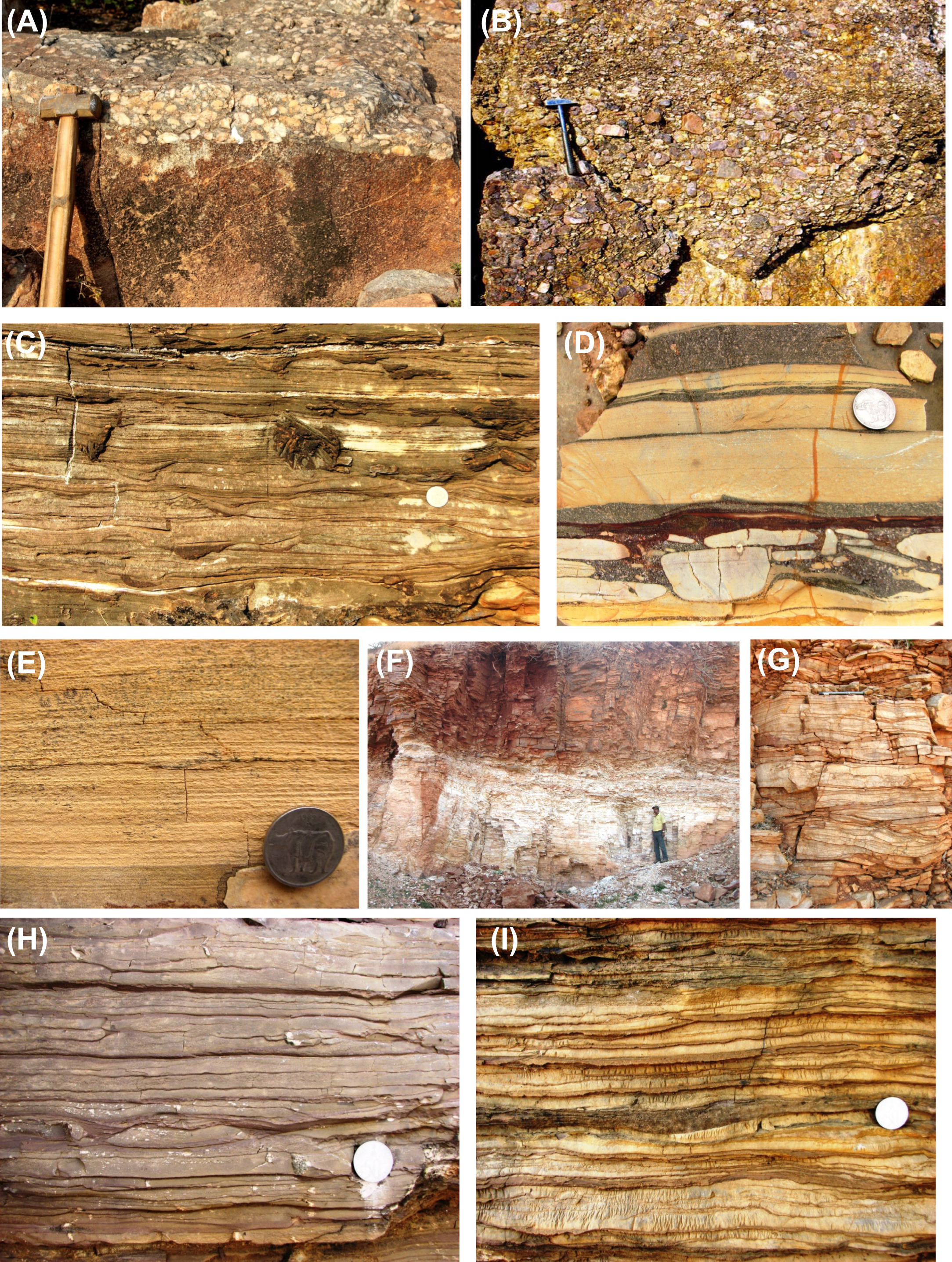Owk Shale Fm
Lithology and Thickness
Claystone: Color laminated shale with minor felsic volcaniclastics; only 10-12 m thick. It consists of red and brown weathering, thinly laminated shale (Fig. image E) with a 2-m-thick zone in the lower part which includes intercalation of ochreous shale and more compact cm thick welded coarse to fine rhyolitic to rhyodacitic tuff and volcaniclastic sandstone layers. Some of the tuffaceous horizons also show ferruginous enrichment. The shale beds have plane parallel laminations.
[Field photographs showing lithology and sedimentary features in the Kurnool Group. Banganapalle Quartzite Fm – (A) basal conglomerate of overlying granitic basement, and (B) thick matrix supported polymict conglomerate with apparent size grading. Narji Limestone Fm - (C) lower part with thin wavy bedded impure limestone, and (D) glauconitic sandstone interbeds in limestone; note pockets of lime pebble conglomerate. Owk Shale Fm - (E) Thinly laminated ash beds, and (F) transition from Owk Shale (lower half of photo) to Paniam Quartzite Fm. Paniam Quartzite Fm - (G) truncated wavy lamination. Koilkuntla Limestone Fm - (H) thin bedded argillaceous limestone, and (I) impure limestone-shale intercalation within the Koilkuntla Limestone Fm to Nandyal Shale Fm transition. (from Saha et al., 2016)]
Relationships and Distribution
Lower contact
Underlain by Narji Limestone Fm with a sharp transition that is commonly marked by a clayey horizon.
Upper contact
Graded upward into the Paniam Quartzite Fm with a transition zone marked by thin, wavy bedded to rippled, medium-grained quartzite and commonly marked by a clayey horizon (Fig. image F).
Regional extent
Laterally extensive across the Kurnool district
GeoJSON
Fossils
Age
Depositional setting
Outer shelf
Additional Information
